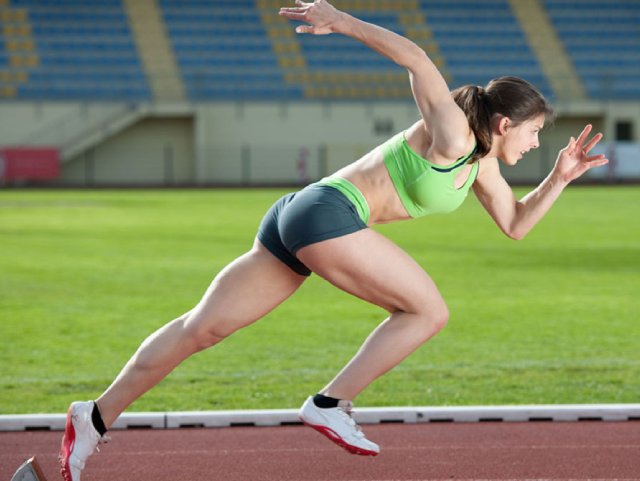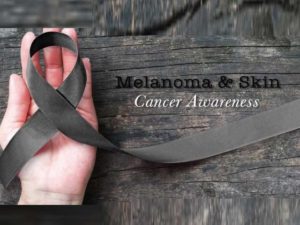Everyday, millions of men, women and children, participate in sports and sport related activities. Some of the most frequent injuries related to such activities, affect the skin. Besides, athletes spend more time in the sun, sweat more, shower more and certain areas of the body are under friction for several hours a day. They are more exposed to ‘the elements’ (sun, rain, wind, snow, dirt) and pollutants (smog, pollution, chlorine).
Most of these ailments are simple enough, but they can affect an athlete’s performance by causing pain or irritation; and many are contagious, leaving an entire team vulnerable. Some of these skin conditions can also lead to loss of practice time and individual athlete disqualification.
This blog hopes to educate readers on skin ailments commonly affecting sporty and athletic individuals, and how to care for them in a simple, inexpensive and easy-to-follow routine.
Infections
An athlete’s skin is an ideal breeding ground for infection of all kinds! This is because of the warm sweaty nature of your skin, and your dirt-clogged pores. Any scratches or injuries on the surface of the skin, only make matters worse. Athletes involved in contact sports seem to be the worst hit. Wrestlers are prone to ‘Ringworm’ infection of the body (a fungal infection), and herpetic whitlow of the fingers (an extremely contagious viral infection). Athelete’s foot is a fungal infection of the feet and toe gaps. It festers in individuals with sweaty feet. Fungal infections are also common in the groin (Jock itch), underarm areas and toe nails. Viral warts on the feet are common among swimmers, but can occur in any athlete who walks barefoot in common shower areas or uses unclean gym mats. Warts can be extremely painful, and tend to recur despite treatment. Scrum strep is a bacterial infection which is common in rugby players and athletes who spend a lot of time in sea water (surfers and divers). This bacteria can also create kidney infections, which require hospitalization. The infected areas are red, sore and have pus which looks like honey crusts. Water-sport athletes are especially vulnerable to some very unusual bacterial infections, which may require months of treatment with antibiotics. They are even vulnerable to sea lice (Seabather’s eruption), bikini bottom and swimmers ear (both are bacterial infections). Long hours spent under the sun or at high altitudes, can trigger cold sores of the lips and mouth. Shared mouthpieces can spread the infection among several members of a team, a veritable nightmare for any athlete or coach! Scabies and lice breakouts are terribly itchy, and can disqualify an entire team. Pimples are common from the constant sweating, and boils can appear on the back and scalp from the pressure and rubbing of helmets, chin straps, golf bags and other equipment.
Unusual bumps and growths
Any athlete whose skin rubs repetitively under their ill-fitting props and equipment, is likely to develop lumps and bumps on their skin, at those specific areas. These bumps are caused by thickened skin tissue. Some of these can become painful, and if left untreated for years, they can turn into tumors. Blisters, corns and calluses usually occur on the palms, soles, elbows, knees and knuckles. Jogger’s toe is a bruise under the toe nails, from ill-fitting shoes and sudden stops in motion. Athletes and body builders are also likely to develop stretch marks on their shoulders, knees and thighs.
Sun burns and the risk of skin cancer
Outdoor athletes probably constitute the most high-risk group in terms of exposure to ultraviolet radiation. While the light skinned races are more vulnerable to skin cancers, even the dark skinned races can develop non-cancerous tumors and growths which can be hard to treat. Contrary to popular belief, winter and aquatic athletes are at higher risk for radiation induced tumors, as water and snow reflect much more sunlight. Repeated episodes of bad sunburns can increase the cancer risk of any person. Moreover, sweating increases the chances of a sunburn. A painful sunburn can keep a sportsman off practice for several days. Moles that increase in size, itch, bleed or change color must be immediately screened for cancer. Cyclists, marathon runners and swimmers are especially unfortunate, as they do not often get the time to reapply their sunscreen. Studies reveal that most athletes do not use sunscreen at all, and the ones who do, tend to forget applying sunscreen to their lips, ears and back of the neck. Certain medications can also make the skin more sensitive to sunlight, so team doctors need to keep this in mind.
Itches and Allergies
These are rare, but athletes have known to be allergic to their equipment, especially metals, rubbers, fiberglass and chemicals in cleaning materials (footwear, wetsuits, goggles, mouthpieces, sports tapes, racquet handles etc). Allergies are itchy, and the rashes look red and oozy. Outdoor sportsmen also risk insect bites and stings. Such allergies can be debilitating. Swimmers can have very dry skin, and dry skin is itchy and allergy-prone.
Sports related skin injuries
Friction (from equipment or the inherent nature of the sport) can cause chafing, scratches, blisters, corns, calluses, bruising (black heel), bald skin patches, and ingrown hair and nails in those areas of the skin that come under the highest friction and tensile forces.
The author would like to make a special mention with regard to the use and abuse of anabolic steroids. It is well known that these drugs cause liver damage, heart attacks, high blood pressure, strokes and mood swings. From a dermatological perspective, they can cause balding, acne, facial hair growth in women, male breasts, and stretch marks. Use of shared needles is strongly condemned in the era of HIV.
Skin care for athletes
Sun protection in the form of water resistant sunscreens with SPF 50 or above is an absolute essential. Certain areas like the cheeks, nose, lips and ears can be covered with a zinc-oxide and calamine based paste, which acts as a physical barrier to sunlight. Use lipbalms which have sunscreen in it. Sunscreen must be reapplied every 90 minutes.
Protective clothing, custom-made felt-lined footwear, and professionally fit sports gear can help an athlete avoid friction injuries. For prolonged exercise, consider a second set of shoes which you can switch to halfway through the session.
It is important to bathe after every game or practice session using mild and fragrance free soaps and shampoos. This is especially important for swimmers. Wear plastic footwear to common shower areas, and do not share soaps, towels, combs or protective mouthpieces. Keep your hair and toes dry. Use antifungal dusting powders on your armpits, groins, buttocks and feet. Swimmers need to use moisturizers liberally. Choose products which are labeled as ‘allergen-free’, ‘non-comedogenic’ (do not cause acne) and ‘dermatologically tested’. Use hand and foot creams which contain urea or glycolic acid; this will keep your skin soft and take care of corns and calluses. Toe nails must be cut straight (and not rounded). Cleanse your face regularly using face-wipe tissues and anti-acne cleansers.
Gym equipment needs to be wiped regularly with diluted hydrogen peroxide or alcohol. Training garments, including socks and undergarments must be washed after every session, and dried in strong sunlight.
Athletes who come in contact with sand (eg, beach volleyball), should only play in sand which is free from animal feces. It is helpful to run a quick ‘self-examination’ of your skin, especially on your hands and feet, every day, at the end of a game or training session. Do not neglect any skin rash or itches, and report to your team doctor, who can refer you to a dermatologist. This is especially important to prevent a breakout of infestation in your entire team.
Outdoor athletes need to always carry plenty of sunscreen and insect repellents. Women athletes must always wear a sports bra for support, and to avoid nipple burns. If an athlete has had a bad allergic reaction to an insect bite, a second bite could prove to be fatal. Your team doctor must warn you about this, and you can consult a dermatologist regarding immunotherapy injections.
Swimmers must always use cap and goggles to protect their hair and eyes. Use fog free padded goggles from Speedo (model 750127). If you suspect an allergic reaction to your gear, visit a dermatologist for a patch test to confirm the same, and learn about alternatives. Injuries and allergies must be tended to immediately, in order to ensure an athlete’s undivided concentration and optimum performance. Massages and physiotherapy must only be administered by trained professionals. Drink plenty of water, and consume sports drinks only when needed, and only with the approval of your trainer.
Skin care products you must avoid if you are an athlete or athletically inclined:
Any products containing animal parts (or lanolin), fragrance, Hydroquinone (skin bleaching ingredient), mineral oil, lead, mercury, parabens, and skin care products which contain human placenta tissue.




